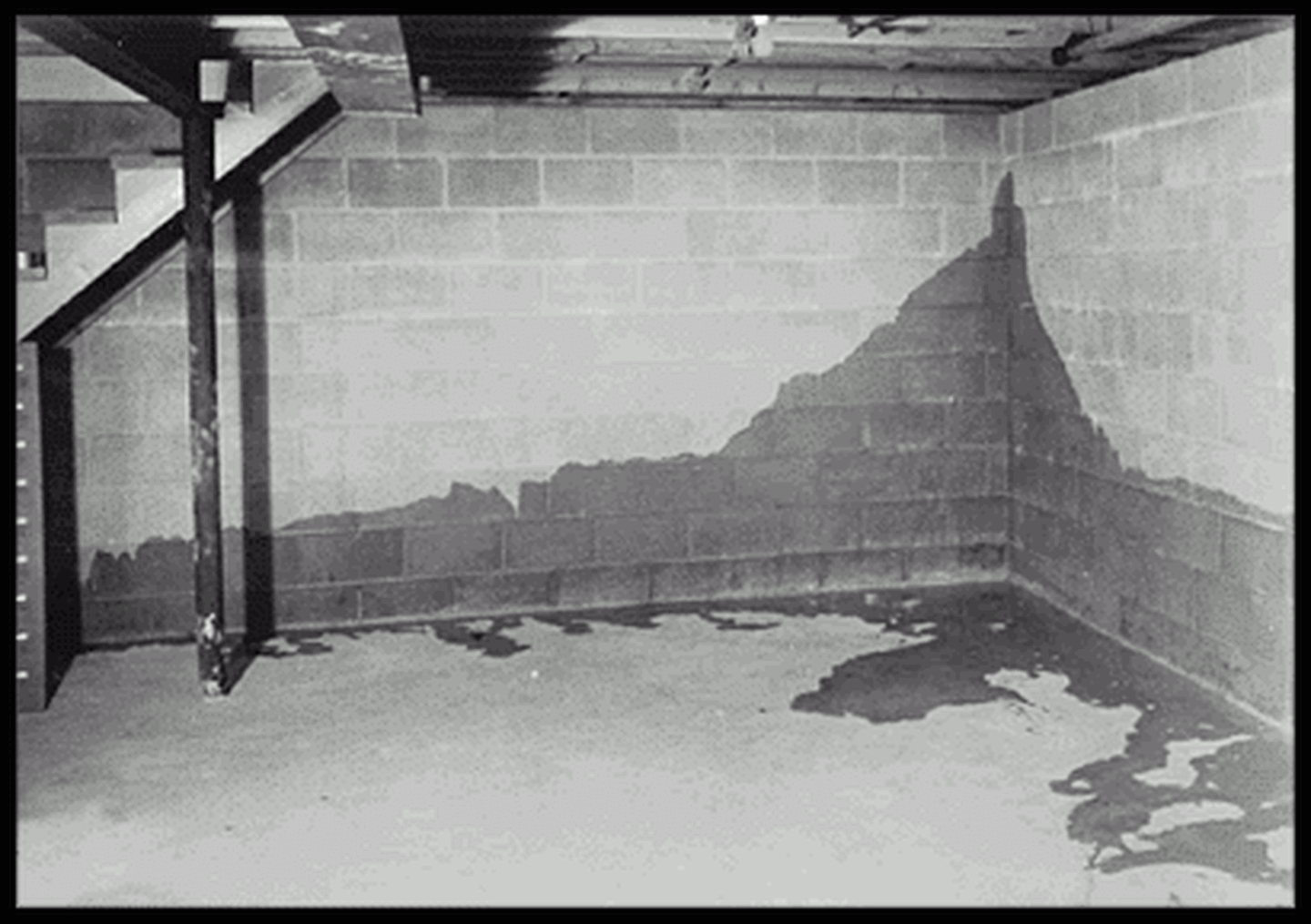Everything You Want to Know About Leaky Basement Walls and Floors

Getting water into the basement is an unpleasant situation for anyone, whether you have a finished basement in your home or if it is an unfinished storage area. Heck, even seepage in an isolated furnace or mechanical room is unacceptable. And waterproofing is not a want — it is a need, so it makes sense that most homeowners prefer to take the most effective, yet conservative approach to fixing the problem. Part of the process for waterproofing a basement is diagnosing where the leak is coming from. A qualified professional waterproofer will usually need some input from the homeowner to arrive at a solution to your leaky basement walls and floors.
While there are a number of ways water can enter into a basement, it really boils down to these four ways:
1. Water penetrating through the foundation wall.
By far, the most common way for water to enter the building is laterally through the foundation wall. If a foundation wall is constructed of poured concrete, the culprit is most likely one or more vertical cracks. Nearly all poured concrete cracks at some point — just look the next time you are walking on a concrete sidewalk or driveway. Water can seep through other voids in the walls such as a tie rod, a pipe penetration, exposed aggregate (honeycomb) or spalled concrete. Masonry foundations, on the other hand, are porous by the nature of their construction. There are voids in the foundation everywhere! Seepage can occur between the individual units of brick, stone or concrete block through the mortar joints. There are literally thousands of joints that are susceptible to foundation wall seepage.
2. Water leaking from above the foundation wall.
One of the more difficult foundation waterproofing seepage problems to diagnose is “over the top” of the foundation wall, especially when the basement is finished with drywall or paneling. When the top of the foundation is buried beneath the grade or landscape, it may seem to be the obvious conclusion. However, it is possible that the source of the leak is from higher than the dirt-line. Just ask Sir Isaac Newton! Gravity will cause water from leaky windows, door frames and even roof leaks to find its way to the lower basement level. The most definitive way to determine if the leak is actually from below grade is to place a running garden hose next to the wall on the dirt or paved surface. Make sure to let the water flow and pool naturally; don’t let it directly hit the foundation wall. Most seepage from the top of the foundation can be recreated within 15 or 20 minutes.
3. Seepage at the floor/wall joint.
Seepage can occur at the floor/wall joint (aka: cove joint) from hydrostatic pressure from beneath the floor or laterally through the keyway, which is the joint where the wall sits atop the footing. True hydrostatic pressure from beneath the structure will usually affect a widespread area, such as the entire length of a single wall, multiple walls or the entire perimeter of the basement. Water penetration where the foundation wall rests atop the footing is usually more sporadic or isolated. Actual causes for this type of seepage range from voids at the base of the foundation, cracks in the footing or even persistent standing water next to the house. One constant is that water will always seek the path of least resistance.
4. Seepage through cracks in the floor slab.
This is one true symptom of hydrostatic pressure or a high water table. When a water table forms beneath your building it tends to rise uniformly, coming up at both the cove joint and through cracks in the floor. It is entirely possible that the pressure beneath the floor is what caused it to crack in the first place! This phenomenon occurs when water seeps into the ground and has no place to go after the earth is over-saturated. Now, if you have a working drain tile system, the water has a place to drain to, which prevents a water table from forming beneath your foundation. The lack of a drain tile system or even a failed sump pump can have your basement in ruins after a severe rain.
Once it has been determined how the leak happened we can prescribe a solution that has been effective in thousands of homes. As the largest basement waterproofing company in the Midwest, our knowledge and experience is unparalleled. You have questions? We have answers, and plenty of them! We love helping people solve the mystery of their wet basements!




